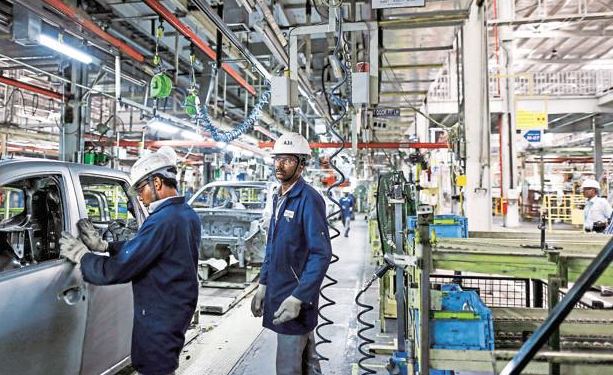India’s industrial output shrank while inflation swelled, official data released on Thursday showed, highlighting challenges for policymakers battling an economic slowdown amid surging food prices.
Factory output contracted 3.8% in October after shrinking 4.3% in September, in sharp contrast with an 8.4% expansion in October last year. Retail inflation continued to surge in November, fuelled by soaring food prices, as prolonged rains dampened vegetable supplies.
Experts said if economic growth does not show signs of an uptick in the December quarter, the Reserve Bank of India (RBI) may come under pressure to give further monetary stimulus to support the economy, given the fact that retail inflation is driven by food prices and is not across the board. Vegetable prices surged 36% in November from a year ago, data released by the National Statistics Office showed.
India’s industrial output shrank while inflation swelled
Retail inflation surged 5.54% in November as food price inflation measured by the Consumer Food Price Index. Also, it rose 10% in November from 7.89% in October.
Pointing to a demand slump in the economy, manufacturing output. Also, which accounts for three-fourth of factory output, contracted 2.1% in October. The contraction in consumer durables deepened in October. Production of items such as cars and household appliances contracted 18% in October, after shrinking 9.9% in the month before.
Capital goods production that reflects investments in manufacturing continued its sharp contraction in October too. It has now contracted by over 20% for the last three months. Energy generation, seen as a proxy for living standards, too remained muted. Mining output covering mainly coal and crude oil contracted by 8% in October, and electricity generation by over 12%.
“The broad-based industrial weakness continues. The fiscal and monetary policy measures will have a lagged impact on the economy,” said DK Joshi, chief economist at Crisil Ltd. “If economic growth remains weak in the December quarter. Also, then there is scope for monetary policy to further support economic growth.” He said the factors that may have an impact on retail inflation in the weeks ahead. Also, include higher telecom tariffs and a possible increase in goods and services tax rates.
The government announced various measures to support the automobile industry
According to Sunil Kumar Sinha, director of public finance and principal economist at India Ratings and Research. Also, the industrial output figures clearly suggest that the festival season could not arrest the declining growth momentum of the industrial sector. However, resulting in the manufacturing sector clocking degrowth for the third consecutive month in November. “This is unprecedented as the new series of IIP with 2011-12 as the base year so far. However, it has not witnessed such consecutive months of degrowth either in the manufacturing, electricity or the industrial sector as a whole,” said Sinha.
The government has announced various measures to support the automobile industry. Also, exporters, non-bank lenders and housing financiers in addition to announcing a sharp corporate tax rate cut for domestic companies. However, not availing of any tax breaks and to new manufacturing companies. RBI has so far cut its benchmark repo rate five times in a row this year totaling 135 basis points.
India’s economy grew 4.5% in the second quarter, its slowest pace since March 2013.




